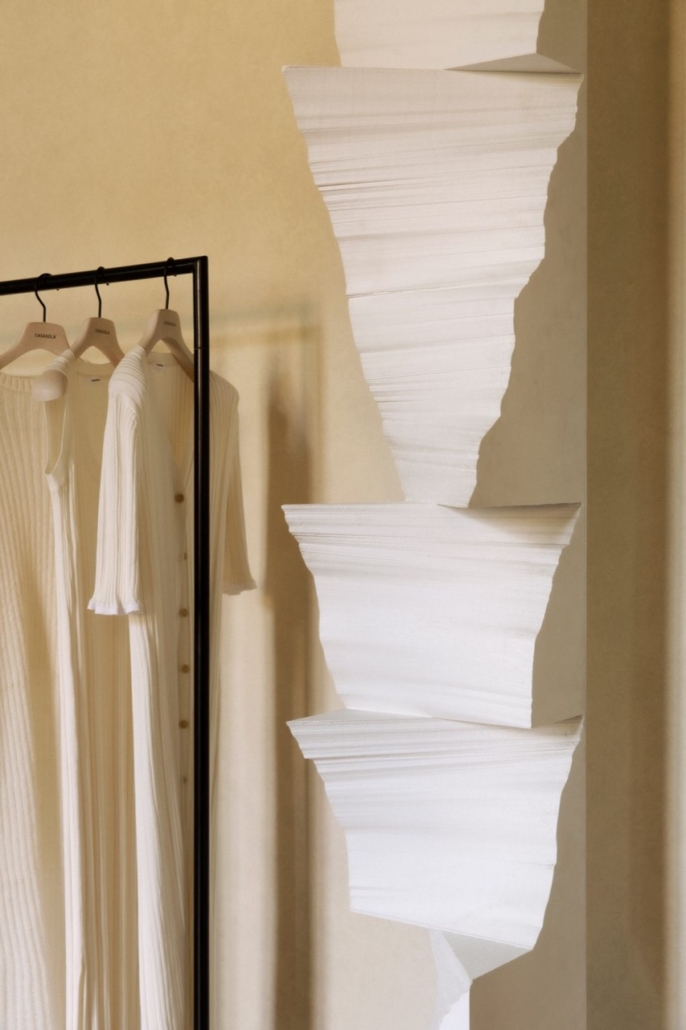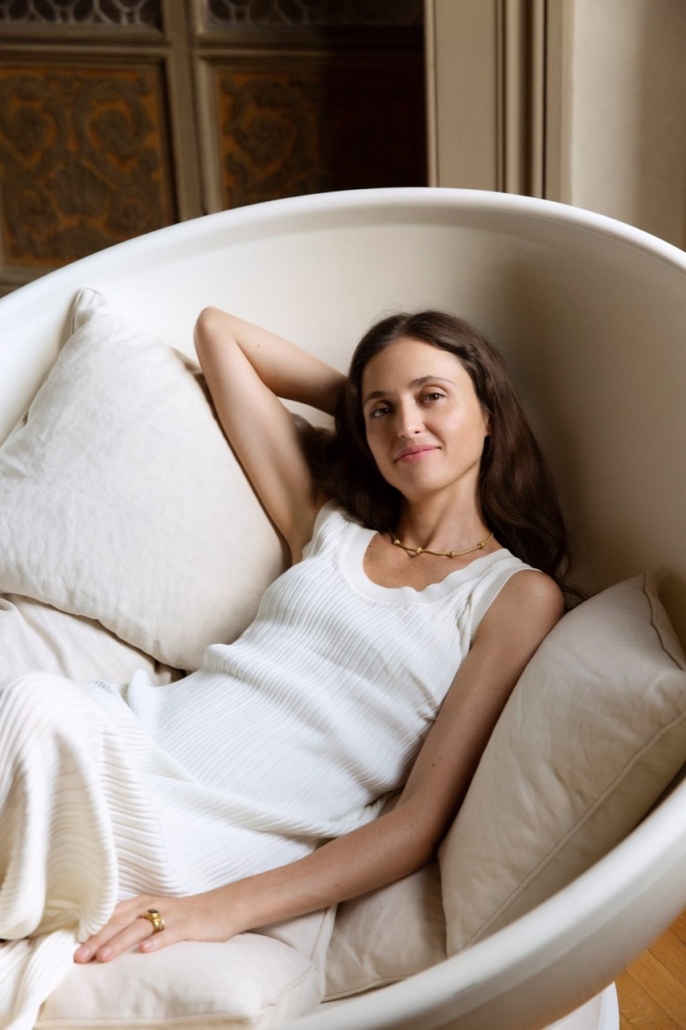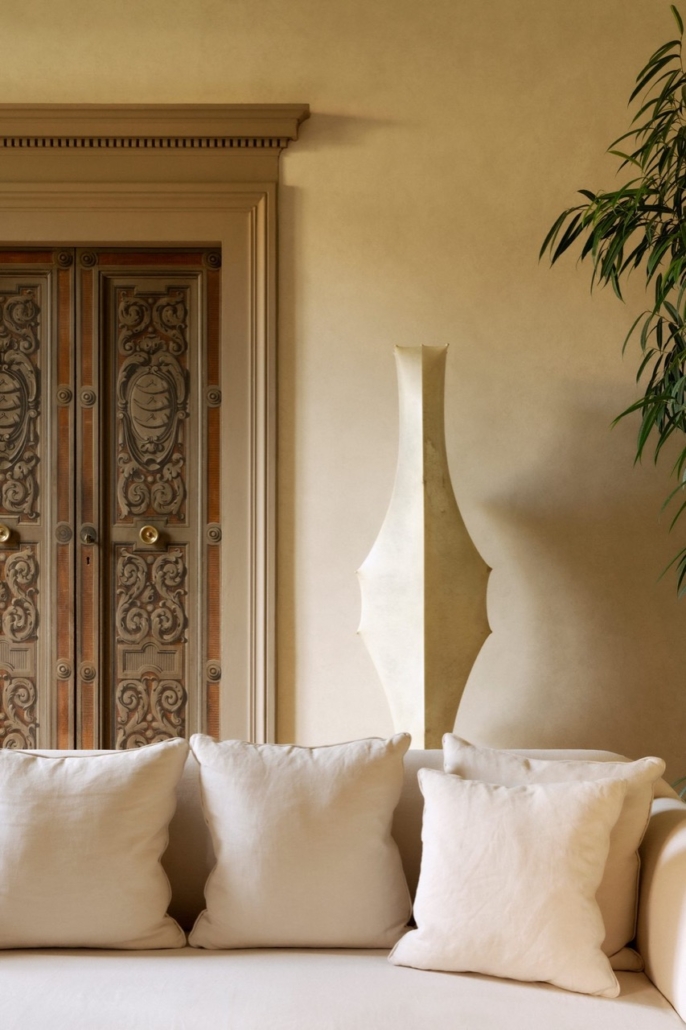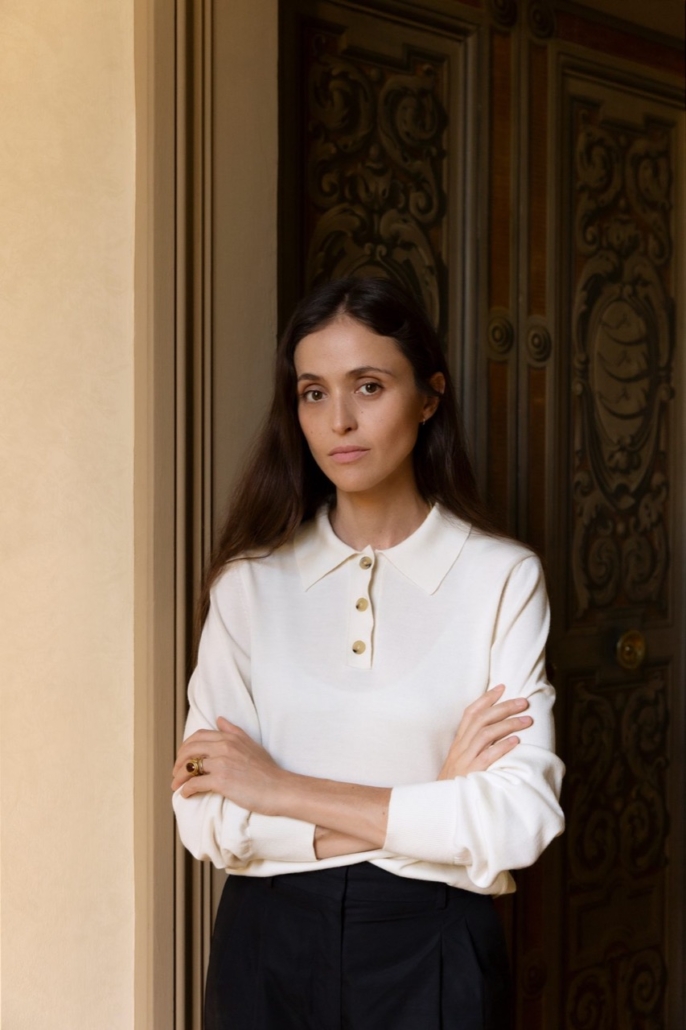MEDIEVAL MODERN:
A designer’s peaceful home in a Florentine palazzo.
Words by Laura Rysman. Photography by Cecilie Jegsen.
When I arrive at Palazzo Guicciardini in Florence, tourists are pressed against the iron gates, jostling for a view of this medieval marvel. They aim their phone cameras toward the palazzo’s serene garden, with its meticulous topiary and blooming rose bushes bordered by the Medici’s famous Vasari Corridor.
For Barbara Casasola, a fashion designer who has cultivated a passionate following for her essentialist clothing line, this is not a landmark—it’s home. I squeeze past the crowd of tourists and head upstairs, where she greets me at the door and leads me into her living room. It neighbors the apartment of the Guicciardini descendants; the family has owned this palazzo for hundreds of years.

In the 13th century, these quarters housed the famously humble and beatific St. Philip Benizi, who hid himself away rather than take on the role of pope. “I think you can feel that presence—there’s still a real sense of peace here,” says Casasola. Many of the apartment’s historical details have remained intact, with a trompe l’oeil mural of flowered coffers on the vaulted ceiling, as well as doors and shutters painted with florid heraldry.
Despite its medieval roots, the space feels airy and modern, with mid-century furniture and a pair of jungle-sized potted plants, plus several racks of Casasola’s designs; the palazzo doubles as her show- room.

In the foyer, amid framed shots by the 1990s-era Maison Margiela photographer Mark Borthwick, a good friend, Casasola shows me her new bucket bag design. It’s the brand’s first-ever purse, crafted at the same Tuscan workshop that Bottega Veneta employs. The bag is exacting and clean-lined, but free of rigidity—the essence of her simple style. She then pulls out a brown sweater- dress in silk cashmere that features a knit tunic tied at the waist. It’s a bit “Franciscan monk,” she jokes, but streamlined into func- tional, contemporary layers that eliminate the need for a coat. Rejecting the quick-change cycle of the fashion calendar, the collection is built of high-quality wardrobe heroes in natural tones, like the wheat-hued knit tank dress Casasola wears the day we meet.

“As a designer, you have a necessity to make stuff, but what you make has to mat- ter,” she says. Everything must be “more than utilitarian: It has to have soul.” Next to Marzio Cecchi’s 1970s curved Banana Leaf wicker chair, a honey-colored cotton macramé dress hangs in the window, the fruit of 40 hours of hand-knotting by a crafts- woman in Puglia.
Casasola wears no makeup or nail polish and looks elegant and arresting; a designer’s line drawing come to life. “The goal is to change the mentality. I want to be a solution for women,” she says, citing her many “converted” friends who have sim- plified their wardrobes, like the artist Lola Schnabel, whose artichoke ceramics rest on the table. The Casasola client rejects glitz and trends in favor of enduring style and low-impact consumption. “We are the Italian answer to this change. We’re small. We’re independent. But we have the best quality, the best supply chain and real values,” she explains.

In 2019, the Brazilian-born designer relocated from London to Florence, the city where she first began her career at RobertoCavalli in the late 2000s, a few years before founding her own brand in 2012. “We’re in the heart of craftsmanship here in Florence, so I can create more, and I can have a hu- mane, one-on-one relationship with the arti- sans, but I also wanted to reduce my carbon footprint and stop shipping samples back and forth,” she says.
“And here,” she confides, leaning back on a white linen couch she designed herself, “I have the most chill life.”


